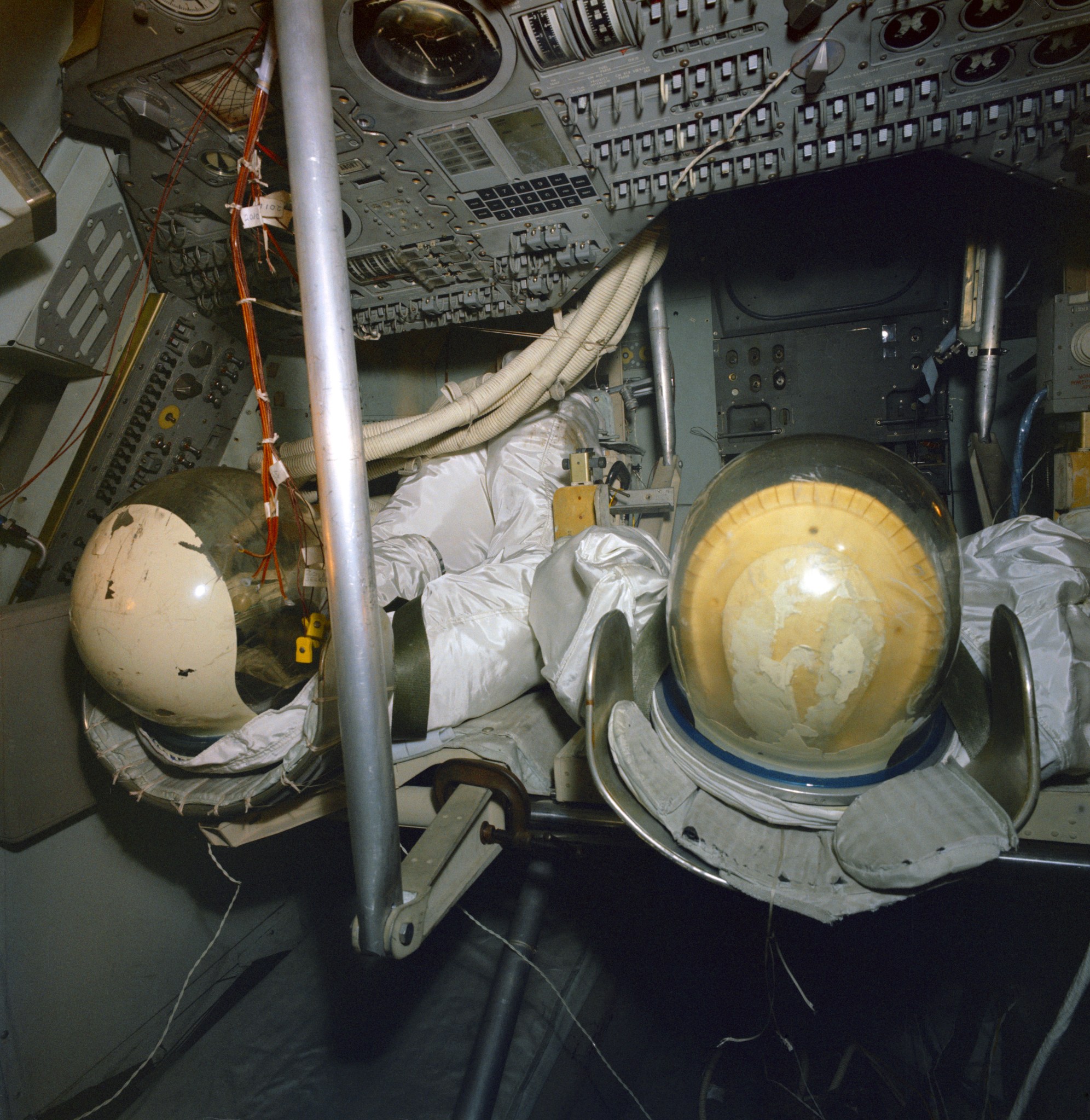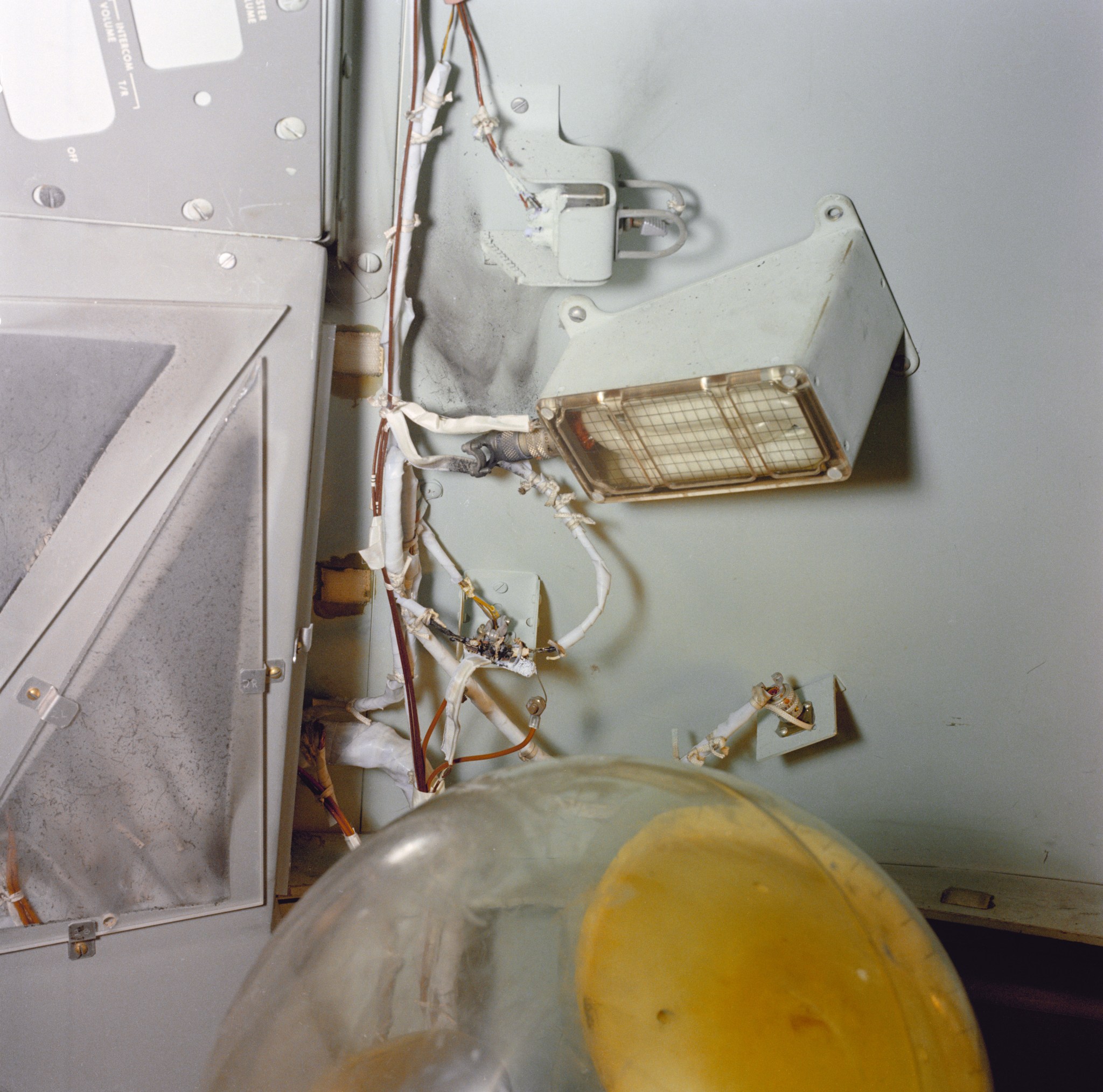50 years ago, on the way to the Moon…..
On March 14, 1968, NASA announced that Apollo 7, the first manned Apollo mission planned for October 1968, would use a mixed-gas atmosphere of 60% oxygen and 40% nitrogen at a pressure of 16 psi during operations on the launch pad. The slightly higher than atmospheric pressure inside the capsule would prevent outside air from entering the cabin and altering the required composition. Along with fireproofing changes in the spacecraft, this represented a major change since the Apollo 1 fire in January 1967. During that test on the launch pad in which three astronauts perished, the cabin was filled with 100% oxygen at 16 psi, an atmospheric composition that greatly exacerbated the spread and intensity of the fire. Following the accident, NASA established a Senior Flammability Test Review Board, chaired by Manned Spacecraft Center (MSC) Director Robert Gilruth, to determine that the risk of a fire in the cabin had been reduced as much as possible. In the cabin, ignition sources were minimized and many materials were changed to prevent flame propagation. For example, previously exposed wire bundles were now covered by metal shields and previously unavailable fire retardant materials replaced flammable ones. MSC’s Structures and Mechanics Division conducted more than 140 flammability tests in a full scale boilerplate Apollo Command Module (CM) and Lunar Module (LM) between October 1967 and February 1968, using different cabin atmospheric compositions and pressures. The results of these tests indicated that the fire hazard was greatly reduced by using the mixed-gas atmosphere.
The board concluded that astronauts would continue to breathe pure oxygen in their space suits before and during launch to reduce the risk of developing the bends or decompression sickness, since once in orbit the CM’s environmental control system would gradually replace the mixed-gas atmosphere with pure oxygen and reduce the pressure to 5 psi, standard orbital operating conditions for all US spacecraft at the time. The LM’s atmosphere, since that module wouldn’t be occupied until well into the mission, would be maintained with pure oxygen at 5 psi. The decision on cabin atmospheric composition and pressure took NASA one step closer to manned Apollo flights and landing a man on the Moon before the end of the decade.
For more details on the Apollo flammability test program, please see https://ntrs.nasa.gov/archive/nasa/casi.ntrs.nasa.gov/19700015953.pdf

























